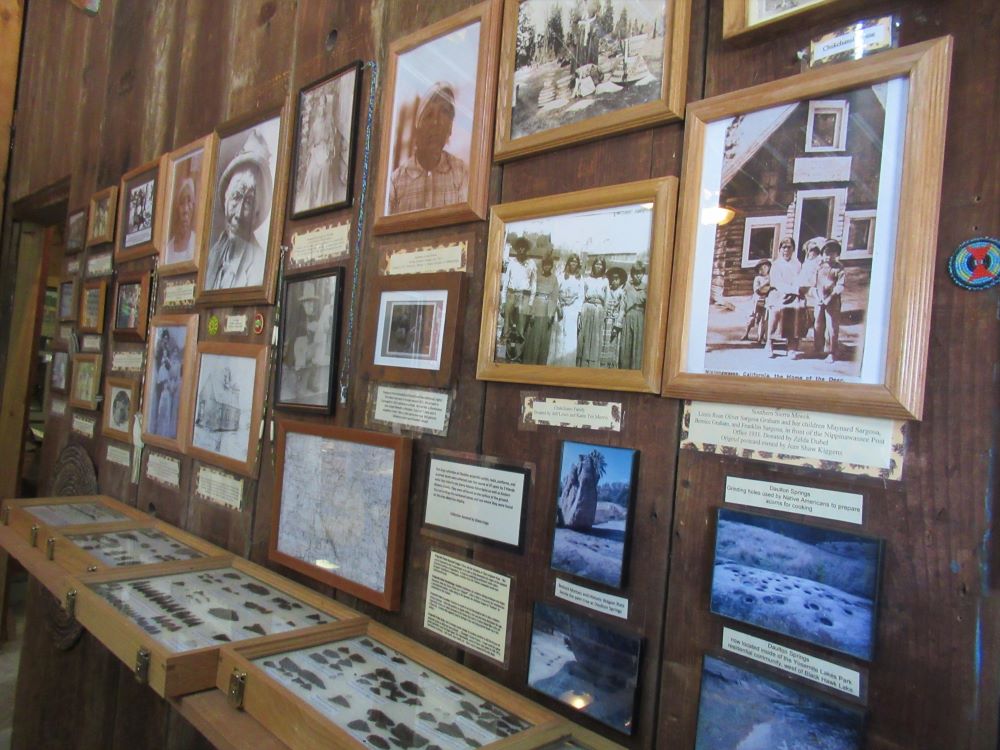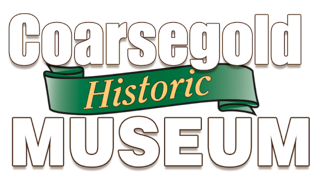The arrowhead collection below the wall of pictures on the right is a display that was collected by two ladies who spent 37 years hiking in the Sierras near this area. They even kept track of the location where each one was found, there is a Map showing the location for the Projectile Points just above the middle display case.
Which brings up the fact that Arrowheads are referred to by Anthropologists as Projectile Points. Projectile points are usually made from obsidian, chert, or any materials that can be chipped or worked into very sharp edges.

What can Archaeologist learn from Projectile Points ?
- Projectile Point Material Origin: Where did the Obsidian or Chert originate from? This can be important to the Archaeologist to be able to help determine the origin of the material (Chemical analysis of impurities). It helps in establishing prehistoric trade routes. Example: Red/Black or Mahogany obsidian from the Warner mountains north-east California/Nevada.
- Projectile Point Weathering: Obsidian Hydration, is a relative dating technique that helps determine when the Arrow Point was “chipped”. After a flake is removed, the obsidian has a non-hydrated surface. After sitting in the ground, the obsidian begins to “hydrate” in relationship to the climate.
- Projectile Point Location: Position or depth in an Archaeological site is also a relative dating technique. Often the position or depth within a site can also help determine the age. Especially if there are other elements in the Strata that can be Carbon dated like a fire pit (Charcoal). Rodents like squirrels tend to disrupt a site and bring arrow heads up to the surface. (Note – it is illegal to remove Projectile Points or artifacts from Archaeologic sites)
- Projectile Point Style: Just as design trends change in modern society so did the forms of projectile points at different time periods…. Example: Clovis Points – Large used for spear points (probably used for larger game like Mammoths, most of these date prior to 10K BC). Attachment notching – side notch, base notch, etc. How was it connected to the shaft.
South and West wall area: Above the projectile point display cases you will notice historic pictures of local inhabitants of the area and granite grinding rock outcrops. Note the picture of Chief Hawa, a Chukchansi Local often referred to as Grasshopper. His daughter Memorette married Thure Strombeck an immigrant from Sweden and had nine children. The burden basket in the display case was donated by the great-granddaughter of Grasshopper. The paintings further to the west of the arrowhead display was done by Joan Constable, a local artist. It represents the homes of the Southern Sierra Miwok, the Chukchansi, and the Western/Southern Mono tribes.
For a video of the Display of Coarsegold Historical Museum’s Projectile Points, select the following
https://youtu.be/H_iZD7fXoaY?t=750t
For more information follow the links to other web sites with some interesting information on Projectile Points in general.
Obsidian Hydration Dating: https://en.wikipedia.org/wiki/Obsidian_hydration_dating
General Projectile point discussion: https://www.projectilepoints.net
